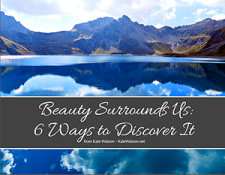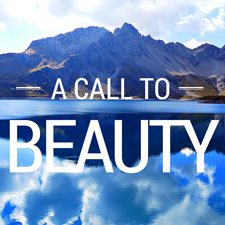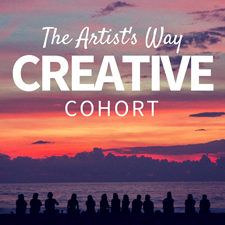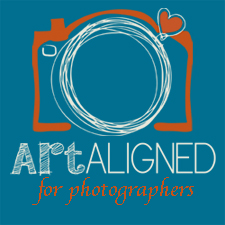I wrote in my earlier guest post, “It’s All About You,” that the key to creative freedom is to disregard external motivations and listen only to what you want. That’s true, but it’s only part of the picture; it’s only the first step. The next step is to forget about what you want — not to let go of your integrity or your values or your goals, but to loosen your attachments to your concept of you. In other words, don’t assume you know who you are, or what your capabilities are. You might be wrong.
 Detail, Knitting, August 2011 by Lisa Hsia Some weeks ago I was at yoga class, and my teacher (the wonderful Kimber Simpkins) told us she’d seen Cowboys vs Aliens. I haven’t seen the movie, but she said one of the characters wakes up and can’t remember who he is. “It’s not like amnesia is all that common,” she remarked, “but you wouldn’t know that, from how often it pops up in books and movies! What is our fascination with it, anyway?” She concluded that it’s because the concept has power. If we didn’t know anything about ourselves or the world around us, we couldn’t say, oh, but I’m not strong enough to try that or the world doesn’t work that way. We would have freedom to go in any direction, or to take a totally radical worldview, simply because we’d be lacking preconceived notions about what’s possible.
 At Home in the Lotus, September 2011 by Lisa Hsia After class, I took this “amnesia practice” out into the world. When a song came on the radio, I didn’t rush to switch it, because I was pretending not to know I don’t like this song. When my diner breakfast came with fruit, I shut out I hate canteloupe! and found that the melon was surprisingly sweet and juicy. In an interaction with strangers, I forgot I’m a nice person and realized my actions were actually uptight and unfriendly. When we think we know ourselves, we get rigid in our thinking. We divide the world into us and not us. But who is us, anyway? There is no static self; there’s only this dynamic existence that is always shifting, and when we put up barriers between me and not me, we close off potentially exciting and interesting new directions.
It’s possible (and, I think, a good idea) to do this practice with awareness and integrity; otherwise, it’s just chaos. It doesn’t make sense to just start hitting people because you’ve never done it before — although you could, if you’re self-protective like me, take a martial arts class and learn how it feels to attack and be attacked. The practice can serve your existing values and goals. I’m a writer and artist: I’ve been trying experimental writing prompts, painting with different colors and strokes, trying not to think I know anything about my skills or how things will turn out. I’ve been frequently surprised by how fluidly my sense of self can expand to encompass these new things.
If the first step is, as I wrote last time, to let go of everyone else’s opinions and expectations to find the freedom to be ourselves, then the second step is this. To let go of our own opinions and expectations, and find the freedom to be even greater than we can imagine.

Lisa Hsia is a writer, artist, and blogger who likes to blur the boundaries of these three fields whenever possible. Find her and her work online at satsumabug.com.
One of the topics discussed in my workshop and a key focus for my work overall is developing a consistent, recognizable style. When sharing this subject, I always reference fine art photographer Nick Brandt, who has been documenting East African wildlife for the last decade. His haunting and ethereal style is a natural outgrowth of his conservationist motivations and his vision to show the world what we could lose if we don’t take action. In his first book, On This Earth, he says:
“What I am interested in is showing the animals simply in the state of being, in the state of being before they no longer are. Before they cease to exist in the wild at least.”
His early images are emblematic, as if the individual animal was a symbol for the species as a whole. In his second book, A Shadow Falls, images depicting the lush environment of Eastern Africa transition to those showing drought and scarcity. This week, he released several new images, leading up to his third (and believed to be final) book on the subject.
In this latest work, Nick’s images have become almost painful to view, showing us the devastation of poaching and the desperation of animals now living in Eastern Africa: Rangers pushing the tusks of poached elephants. A hungry lioness standing before Kilimanjaro. Calcified birds at Tanzanian salt lake Natron. A wildebeest skull jutting up from barren earth.
 Two Rangers With Tusks of Killed Elephant, Amboseli 2011 (c) Nick Brandt  Kilimanjaro Lioness, Amboseli 2010 (c) Nick Brandt  Calcified Reflected Flamingo, Lake Natron 2010 (c) Nick Brandt  Giraffe Skull, Amboseli 2010 (c) Nick Brandt  Elephant Skull, Amboseli 2010 (c) Nick Brandt Overall, the new work is much darker in mood than his earlier work but it is still presented in Nick’s signature look of warm-toned black & white images, shot from close range with a wide angle lens.
It’s fascinating — and incredibly instructive, I think — to see the stylistic evolution of a working photographer. It’s one thing to see a photographer’s entire body of work posthumously and then fit all the pieces together into a seemingly coherent style. It’s another thing entirely to recognize and then watch a distinctive style continue to grow and evolve along with a living and working artist, don’t you think?
To see more of Nick’s work, visit Photo Eye Gallery’s blog or, better yet, stop by to see it in person when you’re in Santa Fe.
Cheers,

 Seated Artist, self-portrait August 2011 by Lisa Hsia One of the hardest things for me, in my writing and my art (and heck, in my life, too!), has been learning to create for myself and no one else. This doesn’t mean ignoring other people’s intelligent critiques, or charging stubbornly ahead with my own agendas when no one else will cooperate. But it does mean listening very hard for my own truths, and expressing them with integrity to myself. It means doing what I really want, even if someone criticizes me for it — even if everyone criticizes me for it. And it means letting go of praise or approval as something to be sought out, because if I start believing how someone else feels about my work, then I stop hearing how I feel about it.
The way I think about this now is as a question of motivation. What drives me to get up every morning and write that blog post or that poem, or paint that picture? Is it that I want people to like me? Do I want someday to make the best-seller lists, or become a household name? Or is it just that I want my family to see I’m doing something with my life? Those are all external motivations. Not that they don’t have their uses, but ultimately, if I’m driven externally, the proof of my success rests outside of me: I won’t feel adequate until someone else says I’ve made it, whether that’s my mother, my mentors, an editor, or Oprah. The trouble is, when I think this way, my happiness isn’t in my own hands, but in someone else’s, which means I’ll always be afraid. Other people are not me. That means if someone says something negative about my work, I’ll read too much into it — but if they say nothing, I’ll do the same. And even if they praise me to high heaven, I’ll worry that they’ll change their minds, or that actually that person doesn’t have as much discernment as I thought. No matter what, I’m fearful, and I’m powerless.
It’s hard to give up these external motivations because we’ve been trained to them. We study for the test scores, we do things for the praise or the promotion or the payment that tells us I’m safe or I’m respected or I can provide. We don’t really know who we are, or what drives us, without these goals. I mean, why do anything, if not for the rewards we get for doing them? What would we do, anyway, if there was no one around to see or to care? It’s a question that, I confess, I’m frightened to answer. But I know I have to, if I ever want to create art that’s truly original and truly authentic — or if I want to escape the endless cycle of fear and relief that is external motivation. A writing teacher once told me, “If you write for yourself, then when you’ve written something you’re really proud of, no one can take that away from you.” That is the kind of freedom I want.

Lisa Hsia is a writer, artist, and blogger who likes to blur the boundaries of these three fields whenever possible. Find her and her work online at satsumabug.com.
The other day, I received the following note:
“I love these! Everyone is looking good, and the kids are so animated. Once again, LOVE these! Thanks for thinking of taking them that day.”
Sounds good, right? What do you think it was in response to? Maybe the following family portraits?




Nope, the note was in response to a couple of snapshots taken in a parking lot with a timer, using a point & shoot camera that was sitting on top of a car. Oh heck, I’ll just show them to you:
Nice, huh? 😉 I particularly enjoy the car hood reflection and signs. And yet, I received oodles of praise.
In comparison, the response from the same person to the family portrait session from two years ago was:
“I’ve decided that I don’t want any of the prints. None of the pictures is what I was visualizing. I was hoping for a simple group picture of us standing together in our yard, less posed and more natural looking. Guess I did a poor job of communicating what I wanted. Sorry for the inconvenience, but thanks for your effort.”
Here’s the lesson: Praise and criticism say far more about the giver than they do about the receiver.
I’m going to say it again for good measure: Praise and criticism say more about the giver than the receiver.
This is an important lesson, one I desperately needed a couple of years ago. I didn’t have it then, but thanks to Tara Mohr, I have realized it now.
The family portrait session above came precariously close to my burnout; in fact, I only realized just how close while visiting Brian’s family this year. I have never been a group portrait photographer. Although I have shot group portraits for weddings, they’ve never been my specialty or something I particularly enjoyed. I coordinated the family portrait session above as a favor, free of charge, and called in an assistant to shoot so that I could organize and be in the shots (big thanks to Tiffany at Hot Metal Studio!).
I’m not going to lie, the response to the portrait session screwed me up for a while. We all know how it feels to do something as a favor and have it go unappreciated; well, it feels even worse when you receive criticism for it. But, what I’ve learned since is that the criticism I receive says more about the person who gave it than it does about me. It reveals who s/he is and what s/he was feeling and thinking at the time instead of indicating who I am and how well I performed.
As long as we are happy with our results, it really doesn’t matter what others say. Of course being criticized still hurts in the moment, but I think knowing that it is someone else’s issue helps you move past it faster. What do you think?
Before I sign off, there’s one more thing I need to mention. Praise seems all good, right? The truth is that it can be just as dangerous. Suppose you get odes to your fabulousness every time you shoot a certain type of session. Having that constant positive reinforcement feels great, but it can also make you feel like you need to keep doing what you’re doing, doesn’t it? Even if it’s not something you enjoy.
Remember that praise also has very little to do with you. Sure it’s nice when someone is happy with your work — it certainly feels better than when they’re unhappy — but ultimately only you can decide if what you’re doing is worthwhile and valuable…or not. None of us can rely on someone else to do that for us.
More to come, including a cool exercise from Ms. Tara.
Cheers,

P.S., I’d like to wish a very happy birthday to my wonderful, sweet, brilliant husband today. Happy Birthday, love!
 Georgia O’Keeffe’s White Trumpet Flower, 1932 “You will probably laugh when I tell you that I like your photographs of my drawings—much better than I do the drawings—I have been very much amused at the way I enjoy looking at them—really enjoy it.” ~ Georgia O’Keeffe, writing to Alfred Stieglitz
The quote above is featured in a wonderful exhibition at the Georgia O’Keeffe Museum in Santa Fe right now, Shared Intelligence: American Painting and the Photograph. If you have a chance, head over before it closes on September 11th.
Cheers,

|





















Kate Watson - Hi Ré: Thanks for stopping by and leaving a comment! I agree that Lisa’s post was very thought provoking. Who knows what we could accomplish if we released limits from our preconceived notions?
satsumabug - Thank you as ever for reading and sharing your thoughts! This practice is still serving me really well; in fact, it’s probably the most helpful perspective-shifter I’ve taken on in a while.
Ré Harris - This was uber thought provoking, Lisa. I see what you mean about seeing and checking my own preconceived notions about myself and my art. I have to make this knowledge more a part of my days. Thanks for sharing these insights!